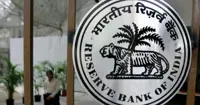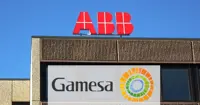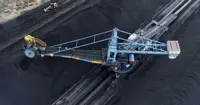Conference Board LEI slips 0.4 per cent in February
20 Mar 2009
The Leading Economic Index (LEI) for the US declined 0.4 per cent in February to 98.5 points, following a 0.1 per cent increase in January, due mainly to data revisions in manufacturers' new orders and real money supply, says Conference Board, a not-for-profit organisation that analyses and publishes economics-based forecasts and assesses trends in the economy.
The data indicates that the recession will continue in the near-term, with a return to strong growth unlikely until 2010.
''Financial market volatility remains strong, and the credit market freeze is relenting very slowly. The LEI suggests the recession will continue in the near term. A return to strong growth will not likely occur until 2010," Ken Goldstein, economist at the Conference Board said.
Six of the 10 indicators that make up LEI increased in February. The positive contributors were the interest rate spread, index of supplier deliveries (vendor performance), building permits, real money supply, manufacturers' new orders for consumer goods and materials, and manufacturers' new orders for nondefense capital goods.
"The LEI declined in February, but strengths and weaknesses were roughly balanced among its components,'' Goldstein said.
The negative contributors were average weekly initial claims for unemployment insurance (inverted), stock prices, the index of consumer expectations, and average weekly manufacturing hours.
The LEI registered a decline of 0.1 per cent in December 2008.
Between August 2008 and February 2009, the index fell 2.1 per cent (a -4.1 per cent annual rate), faster than the decline of 1.6 per cent (a -3.1 per cent annual rate) for the previous six months. In addition, the weaknesses among the leading indicators have remained widespread in recent months.
According to briefing.com, a Wall Street investment analysis firm, LEI can be analysed in two parts.
The monetary components of M2 growth and the yield curve are providing a strong boost to the index. These two components added 0.3 per cent to the index in February, helping to cut the overall decline to -0.4 per cent. In January, these two components added 0.6 per cent, producing an overall gain of 0.1 per cent for the index, it said.
Meanwhile, the Conference Board Coincident Economic Index (CEI) for February declined 0.4 per cent, following a 0.6 per cent decline in January, driven by continued decline in employment and industrial production. It registered a decline of 0.7 per cent in December. The CEI now stands at 102.5 points.
Two of the four indicators that make up the CEI increased in February. The positive contributors to the index were personal income less transfer payments and manufacturing and trade sales. The negative contributors were employees on nonagricultural payrolls and industrial production.
Between August 2008 and February 2009, this index of current economic activity dropped 3.1 per cent (a -6.1 per cent annual rate), a much larger fall than the decrease of 0.9 per cent (a -1.9 per cent annual rate) for the previous six months.
The six-month decline in the CEI is the largest since 1975. Taken together, the behavior of the composite economic indexes suggests that the economic recession that began in December 2007 will continue in the near term.
The Conference Board Lagging Economic Index (LAG) for the US stands at 113.5 (2004=100) in February, with one of seven components advancing. LAG also declined 0.4 per cent in February, following a 0.3 per cent decline in January, and a 0.1 per cent decline in December.
The positive contributor to the index was the ratio of consumer installment credit to personal income. The negative contributors were commercial and industrial loans outstanding, change in labor cost per unit of output, and change in CPI for services. Meanwhile, the average duration of unemployment (inverted), ratio of manufacturing and trade inventories to sales and average prime rate charged by banks held steady in February.
Meanwhile, real GDP fell at a 6.2 per cent annual rate in the fourth quarter of 2008 (following a decline of 0.5 per cent annual rate in the third quarter), the largest quarterly contraction since 1982.


.webp)




























